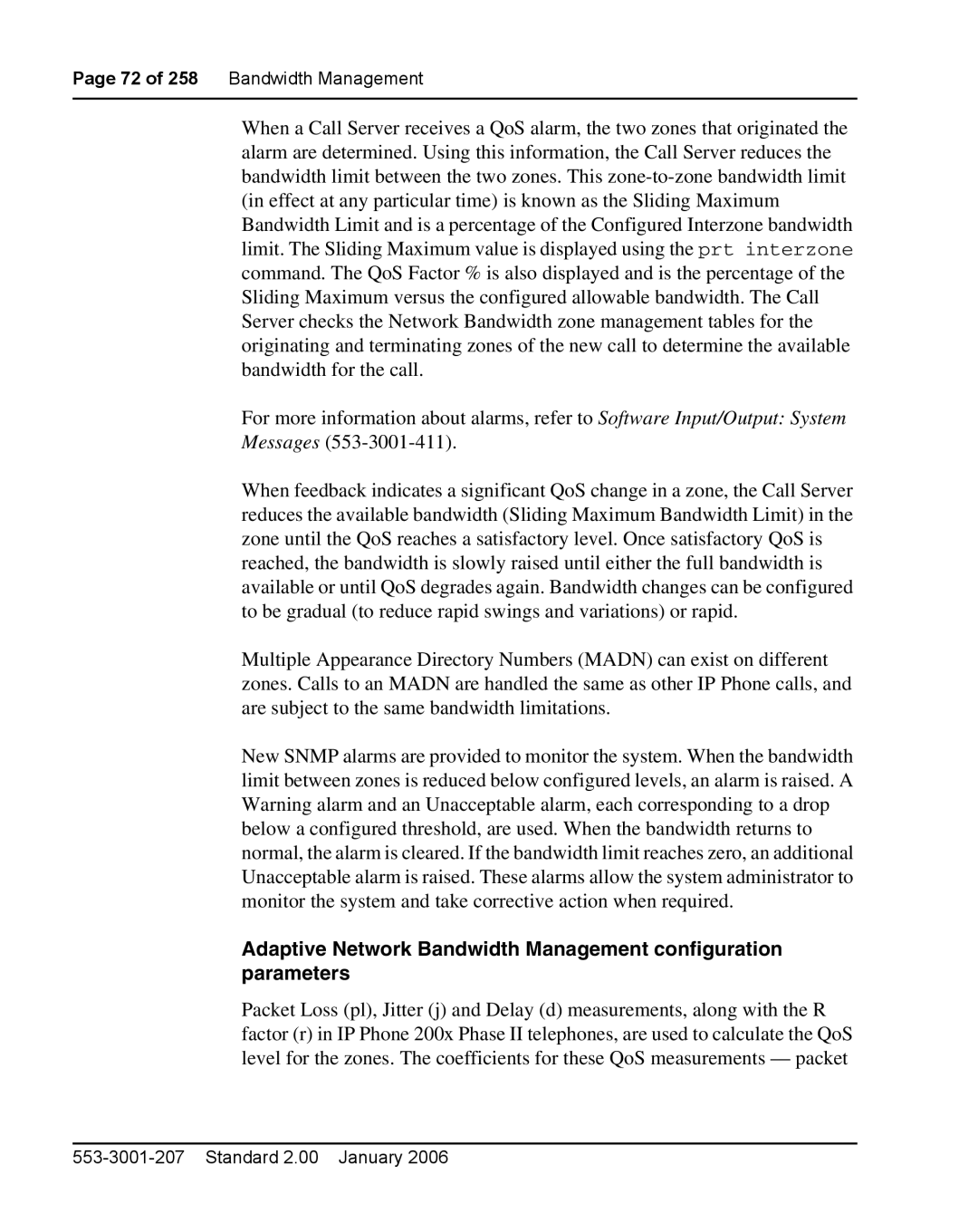
Page 72 of 258 Bandwidth Management
When a Call Server receives a QoS alarm, the two zones that originated the alarm are determined. Using this information, the Call Server reduces the bandwidth limit between the two zones. This
For more information about alarms, refer to Software Input/Output: System Messages
When feedback indicates a significant QoS change in a zone, the Call Server reduces the available bandwidth (Sliding Maximum Bandwidth Limit) in the zone until the QoS reaches a satisfactory level. Once satisfactory QoS is reached, the bandwidth is slowly raised until either the full bandwidth is available or until QoS degrades again. Bandwidth changes can be configured to be gradual (to reduce rapid swings and variations) or rapid.
Multiple Appearance Directory Numbers (MADN) can exist on different zones. Calls to an MADN are handled the same as other IP Phone calls, and are subject to the same bandwidth limitations.
New SNMP alarms are provided to monitor the system. When the bandwidth limit between zones is reduced below configured levels, an alarm is raised. A Warning alarm and an Unacceptable alarm, each corresponding to a drop below a configured threshold, are used. When the bandwidth returns to normal, the alarm is cleared. If the bandwidth limit reaches zero, an additional Unacceptable alarm is raised. These alarms allow the system administrator to monitor the system and take corrective action when required.
Adaptive Network Bandwidth Management configuration parameters
Packet Loss (pl), Jitter (j) and Delay (d) measurements, along with the R factor (r) in IP Phone 200x Phase II telephones, are used to calculate the QoS level for the zones. The coefficients for these QoS measurements — packet
